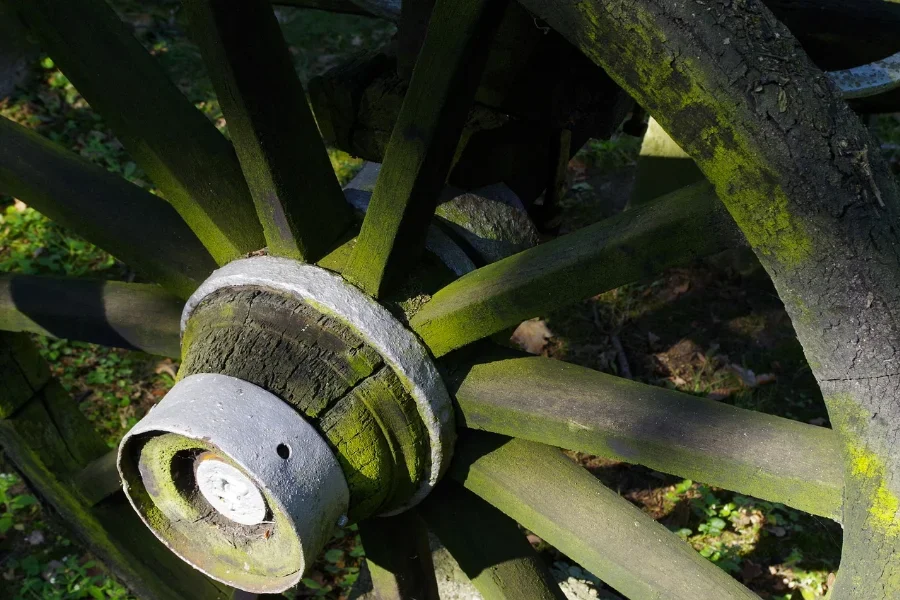There is an art to creating car wheels, and it includes machinery, materials, and quality control. It’s not until the quality control process is complete that the car wheel is packaged, shipped to the manufacturer, and installed on your car. In this article, we’ll take a closer look at how car wheels are made and the technology used.
Table of Contents
Difference between wheels and rims
Common wheel types
The steps to making car wheels
Key takeaways
Difference between wheels and rims
Wheels and rims are two different but closely related components of a car tire’s assembly. A wheel consists of a hub, spoke, and rim:
Wheel
The wheel is the circular metal structure that attaches to the car’s axle and supports the tire. Wheels come in many sizes, materials, and designs, each with its own performance characteristics and uses. Factors like strength, durability, weight, and aerodynamics can affect wheel performance.
Hub

In addition to its functional role, a hub contributes to the appearance of the wheel. The wheel hub is typically cylindrical or cone-shaped and is responsible for allowing the wheel to rotate smoothly around the axle. A well-designed hub ensures that the wheel rotates without wobbling or vibrating, which can cause uneven tire wear and compromised safety.
Spoke

A spoke is a slender bar that connects the hub to the rim. It provides support and stability to the wheel. Spokes can be made of steel, aluminum, or carbon fiber. The number and arrangement of the spokes depends on the wheel’s intended use, the vehicle’s weight, and desired look.
For example, wheels designed for high performance racing cars (like TSW wheels) may have fewer spokes to reduce weight and improve aerodynamics. Wheels for heavier vehicles may have more spokes to increase strength and durability.
Rim

The rim is the outermost part of the wheel that comes into contact with the tire. It’s usually made of aluminum alloy and provides a surface for the tire to attach to. The rim can also impact the performance and appearance of the tire.
Some modern car wheels have hub-centric designs that showcase the hub and its components as a visual element of the wheel’s overall design.
Common wheel types
Steel wheels
Steel wheels are the most basic wheel type and are common with economy cars. This perk makes them easy to replace and easy to find. Another advantage is affordability. They are durable and heavy, which makes them ideal for harsh road conditions. Aesthetically, they are usually pretty basic, but they can become more stylish with hubcaps.
Alloy wheels

These car wheels are made from a mixture of aluminum and other metals like nickel or magnesium. Alloy wheels are popular with drivers because they are lighter and durable. They are also less likely to corrode than steel wheels and can withstand harsh weather conditions.
Chrome wheels

These are a type of alloy wheel that has been coated with chrome to create a shiny finish. Aesthetically they are popular but they require a lot of maintenance than other wheel types. Another drawback is cost. Because chrome wheels are sensitive to damage, they can be expensive to replace.
Carbon fiber wheels

Carbon fiber wheels are a type of high performance wheel made from a composite material composed of resin and carbon fibers. They are a newer type of car wheel and popular among car enthusiasts because they are lightweight and durable.
The steps to making car wheels
The process of making car wheels starts with the design and engineering phase. This is where the specs, size, and shape of the wheel are determined. Once finalized, the casting process begins by pouring molten metal into a mold to form a basic wheel shape. After casting is complete, the wheel is machined to refine its shape and remove any excess material.
The wheel is then heat-treated to improve durability and strength. This involves heating the car wheel to a high temperature and then cooling it rapidly. Following this step is surface treatment to enhance its appearance and protect it from corrosion. Treatment could include power coating, painting, or anodizing (an electrochemical finishing method).
Along the way. Manufacturers use quality control tests and inspections to make sure that the wheel meets specifications. There are checks for defects, dimension reviews, and various other durability tests. Overall, the process of making a car wheel is one that requires precision and expertise.
Key takeaways
Car wheels have come a long way since the early days of technology. Today, manufacturers create car wheels using a variety of materials and techniques, resulting in strong, visually appealing, and lightweight options.
The choice of material often depends on the intended use of the wheel. With advances in car technology, further improvements in car wheels are bound to be developed, which can lead to even more efficient and safer vehicles on the road.



